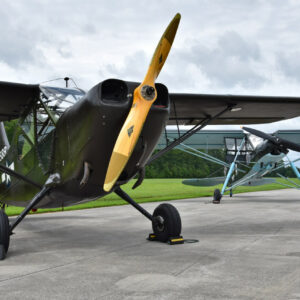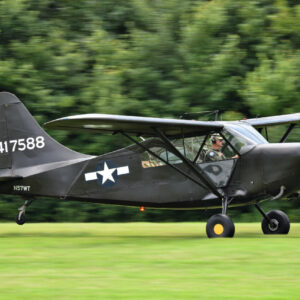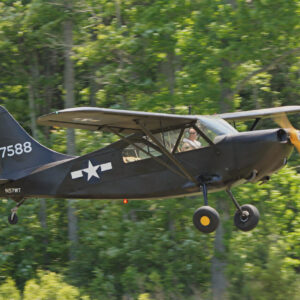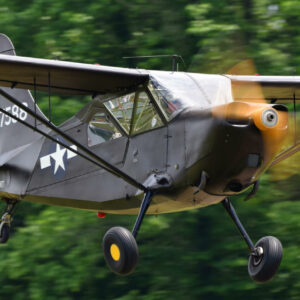The L-5 was the only liaison aircraft used by the US Military during WWII that was purpose-built for the task, with other aircraft like the L-4 being modified versions of “off-the-shelf” civilian aircraft. The L-5 would earn the nickname “the Flying Jeep” because of the variety of tasks that it could perform (a reference to the ubiquitous nature of the GPW Jeep).
One of 3,590 aircraft manufactured between December 1942 and September 1945, the Museum’s L-5 features the redesigned rear fuselage which allowed for more complex air ambulance and cargo transport work. Featuring a wider and deeper profile, as well as a fold-down door where a litter patient could be carried or 250 lbs of cargo could be transported.
Did You know?
During the Battle of Okinawa, L-5s operated from a LST (Landing Ship, Tank) using the Brodie landing system which allowed a light aircraft to take off and land without a flat surface by snagging a wire hung between two booms with a hook mounted above the wing of the airplane.
Specifications
- Number Built: 3,896 total Sentinels (750 of the E variant)
- Year Produced: 1944
- Serial Number: 44-17588
- Crew: (2) Pilot, Passenger or patient on a litter
- Current Pilots:
Dimensions
- Length: 24 ft. 1 in.
- Wingspan: 34 ft.
- Empty Weight: 1,500 lbs.
- Loaded Weight: 2,050 lbs.
- Engine: 1x Lycoming O-435-1 six-cylinder, air-cooled horizontally opposed piston engine
- Engine Power: 185 hp
Performance
- Cruising Speed: 105 mph
- Max Speed: 130 mph
- Range: 375 miles
- Ceiling: 15,800 ft.
- Rate of Climb: 900 ft./min. initial
Armament
- N/A – unarmed




